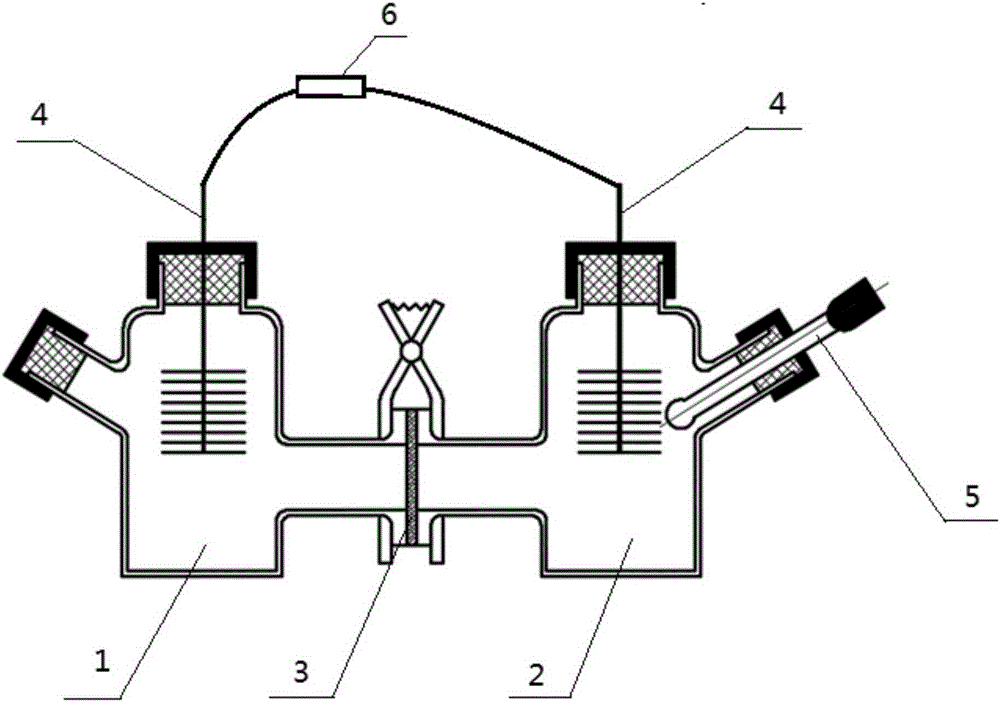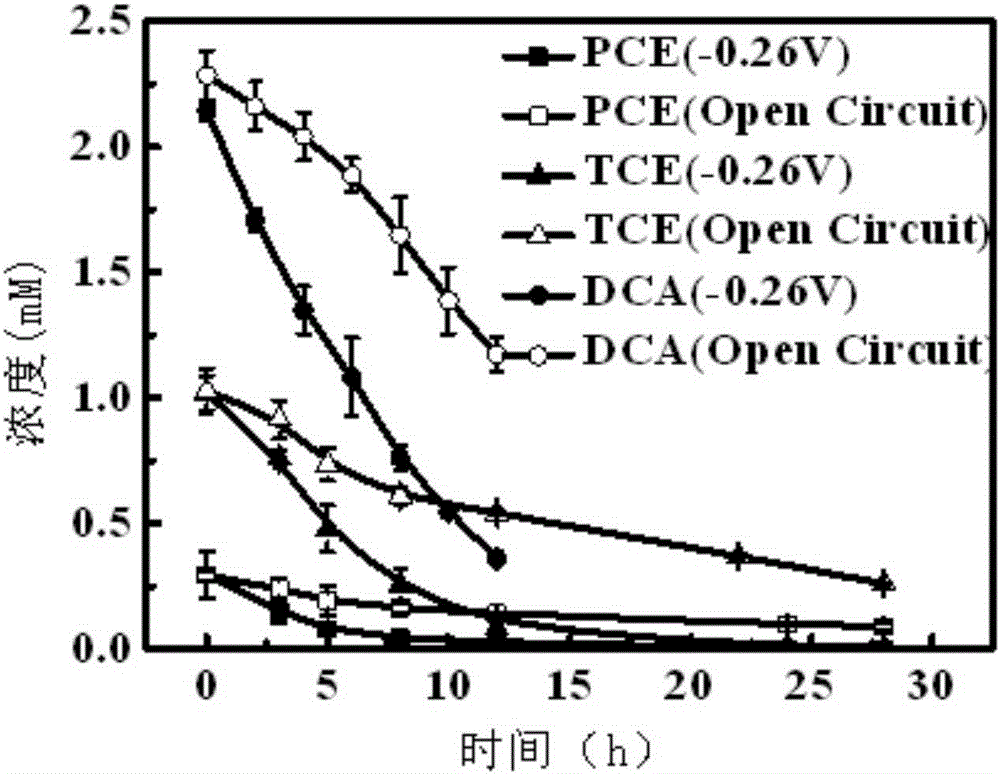Method for promoting volatile chlorinated hydrocarbons to reduce and decompose through electrical stimulation
A technology of volatile and chlorinated hydrocarbons, applied in the direction of using microorganisms, etc., can solve the problems of slow degradation, toxic and harmful intermediate products, incomplete decomposition, etc.
- Summary
- Abstract
- Description
- Claims
- Application Information
AI Technical Summary
Problems solved by technology
Method used
Image
Examples
specific Embodiment approach 1
[0015] Embodiment 1: A method of electrical stimulation to promote the biological reduction and decomposition of volatile chlorinated hydrocarbons in this embodiment is carried out according to the following steps:
[0016] 1. Preparation of culture medium: add 50mL of distilled water to 10-15mL of activated sludge, add distilled water and activated sludge into a glass bottle, blow nitrogen for 15-20 minutes, and then seal it to maintain anaerobic conditions in the bottle and obtain culture base;
[0017] 2. Enrichment and strengthening of functional flora: Add sodium acetate solution and volatile chlorinated aliphatic hydrocarbons to the medium, place the medium in a constant temperature incubator at 30°C, and measure volatile chlorine every 3 to 5 days Degradation of substituted aliphatic hydrocarbons; when the content of volatile chlorinated aliphatic hydrocarbons drops below 50% of the initial concentration, add sodium acetate solution and volatile chlorinated aliphatic hy...
specific Embodiment approach 2
[0022] Embodiment 2: The difference between this embodiment and Embodiment 1 is that the volatile chlorinated aliphatic hydrocarbon in step 2 is trichloroethylene, tetrachloroethylene or 1,2-dichloroethane; the others are the same as Embodiment 1 .
specific Embodiment approach 3
[0023] Specific embodiment three: the difference between this embodiment and specific embodiment one or two is: the composition of the anaerobic culture liquid described in step three is as follows: according to the ratio preparation that every 1000mL anaerobic culture liquid comprises the following components: 11.55gNa 2 HPO 4 12H 2 O, 2.77gNaH 2 PO 4 2H 2 O, 0.31gNH 4 Cl, 0.13gKCl, 0.41gCH 3COONa, 0.1mL vitamin solution, 0.1mL mineral element solution and the rest of distilled water; wherein the vitamin solution contains 2.0mg vitamin H, 2.0mg folic acid, 10.0mg pyridoxine hydrochloride, 5.0mg thiamine per 1000mL vitamin solution 5.0mg riboflavin, 5.0mg nicotinic acid, 5.0mg D-calcium pantothenate, 0.1mg vitamin B12, 5.0mg p-aminobenzoic acid, 5.0mg lipoic acid and the rest of distilled water; the mineral element solution is per 1000mL Mineral element solution contains 1.5g nitrilotriacetic acid, 3.0g MgSO 4 ·7H 2 O, 0.5gMnSO 4 ·H 2 O, 1.0gNaCl, 0.1gFeSO 4 ·7H 2 ...
PUM
 Login to View More
Login to View More Abstract
Description
Claims
Application Information
 Login to View More
Login to View More - R&D
- Intellectual Property
- Life Sciences
- Materials
- Tech Scout
- Unparalleled Data Quality
- Higher Quality Content
- 60% Fewer Hallucinations
Browse by: Latest US Patents, China's latest patents, Technical Efficacy Thesaurus, Application Domain, Technology Topic, Popular Technical Reports.
© 2025 PatSnap. All rights reserved.Legal|Privacy policy|Modern Slavery Act Transparency Statement|Sitemap|About US| Contact US: help@patsnap.com


